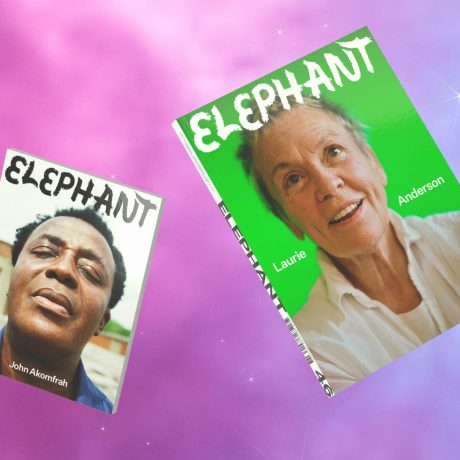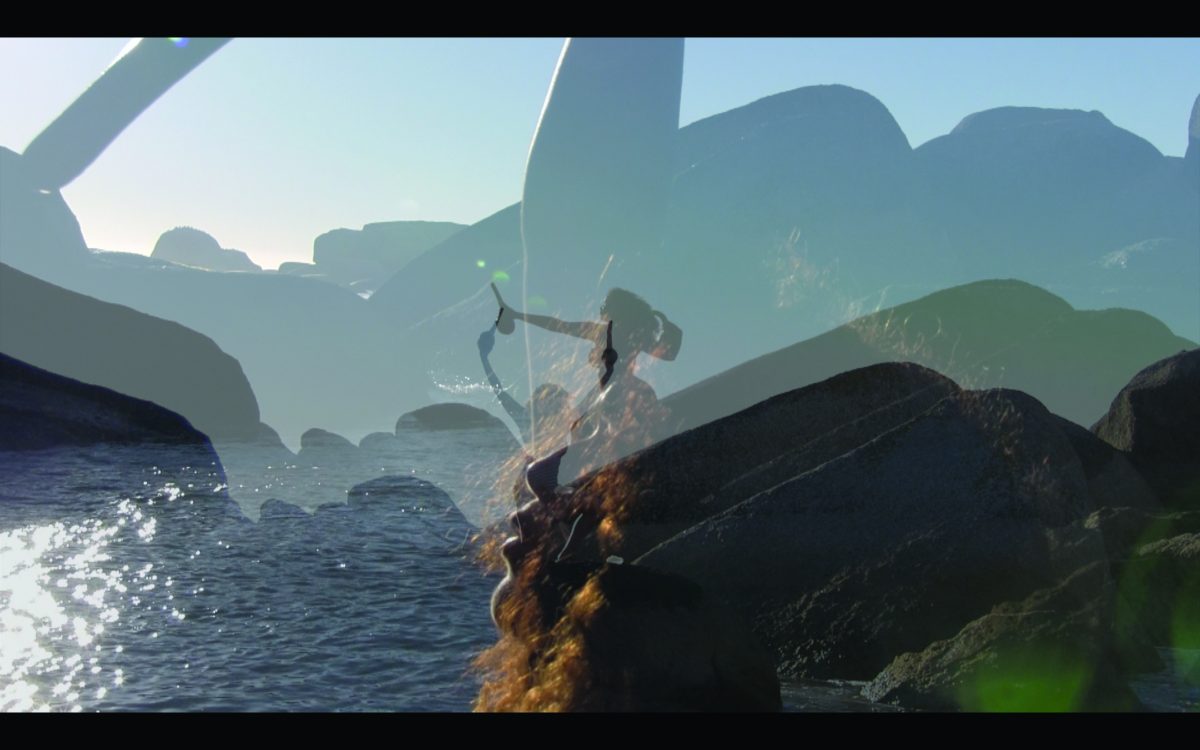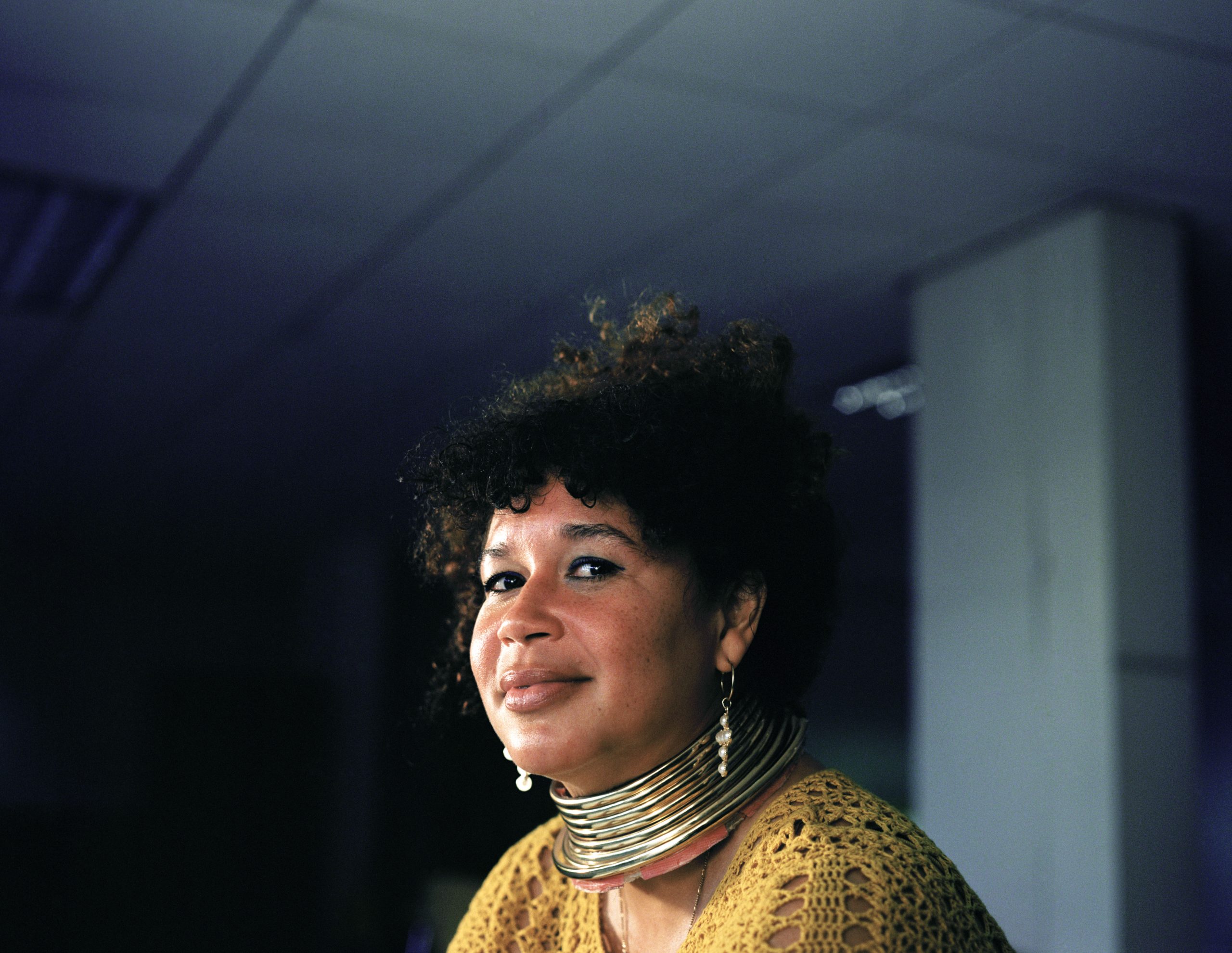
It is often hardest to write about the art that you admire the most. Nothing seems to do the whole thing justice and the resulting dilemma can often find its way into your subconscious. Case in point, in the midst of working on this feature in a sweaty, feverish panic, I had a dream that took place in one of Alberta Whittle’s images.
My body had become part of a collage that featured a candy-pink conch shell and a glittering ocean. Everything seemed beautiful apart from my skin, which was flaking off in big rubbery patches, like PVA glue. It felt like an apt analogy of the artist’s work, in which seemingly alluring scenes quickly recede into something far more disquieting. Everything she creates involves layers and repair, meaning visual references, allusions, illusions, sounds and voices overlap. Skin is important, as is the idea of revelation.
In a slightly embarrassing move, I call the artist a few days later and tell her about my nighttime vision. “That feels really appropriate,” she says, which is a relief. She compares the glue-peeling to “unpicking a wound” and says it all ties in with fundamental themes in her work: discomfort and healing.
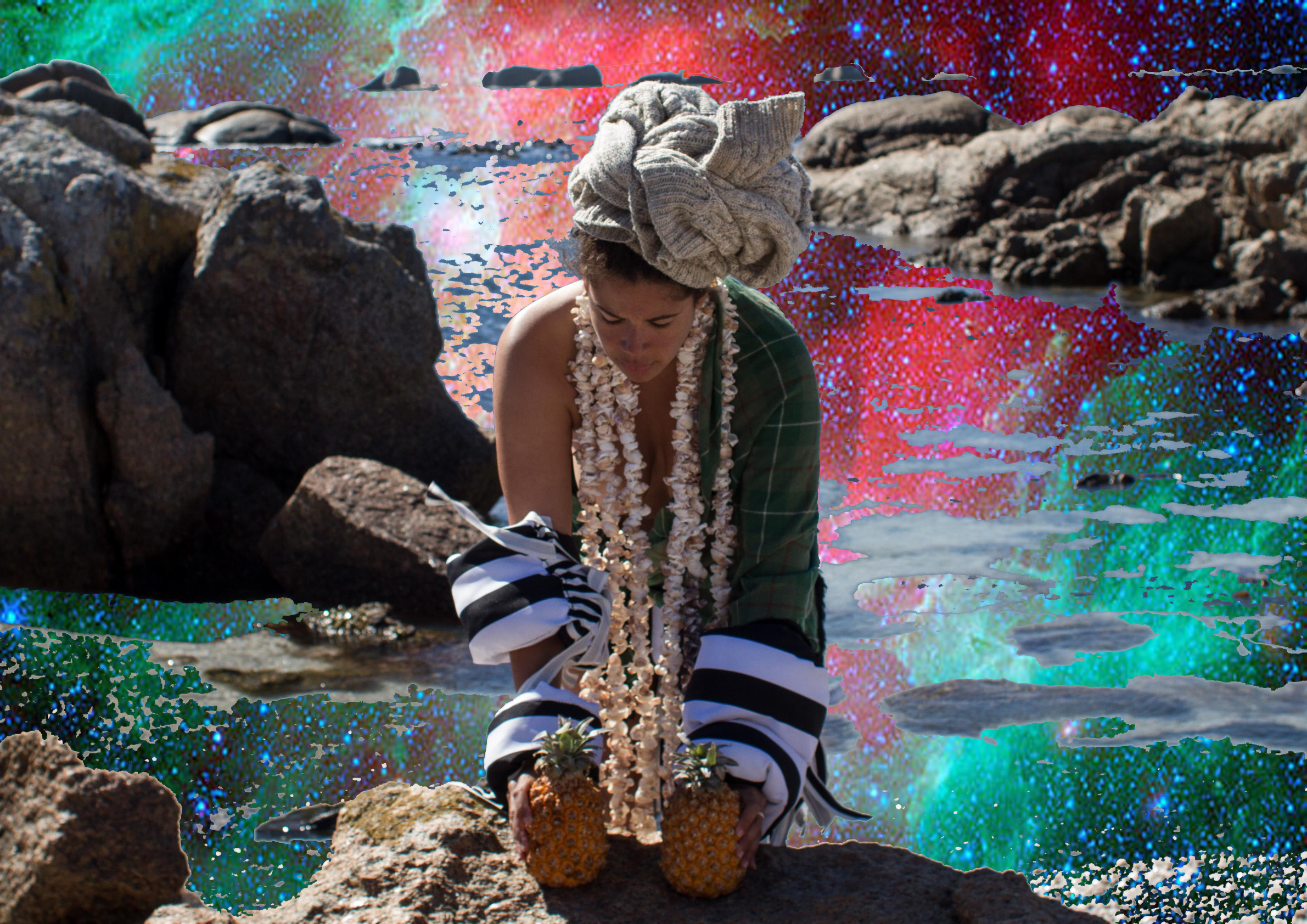
Looking back on what she describes as an exhausting 12 months, Whittle reflects that it has been “a really important time for me to sit in my discomfort and not shy away from it… I have felt deeply uncomfortable and had to really encounter those feelings.” This has proven a powerful mechanism in terms of her agency as an artist, as well as her own sense of healing.
“Dreams are really fundamental to my work, in terms of how they create a different scope that focuses so much on your inner world, and how you can piece that together with the realities of your outer world,” she says. This makes sense: dream logic, like the collage pieces that she creates, is non-linear yet ultimately decipherable. Her process, she says, is “never really a straight line, because it circles back on itself. It’s much more like a spiral. I think there’s always a sense that we can get answers if we move from A to B, but maybe we need to go to Z before we get to B.”
“A lot of my work comes from either rage or hope, or both simultaneously”
Whether viewed as snapshots or languorous, poetic video essays, Whittle’s work is constructed from layers and dualities. It is campy (brash colours, sassy send ups of “internet” tropes) and serious in its themes (colonialism, xenophobia, sickness). It is light and dark; sombre and playful; folkloric and meme-ish. Although largely video-based, her practice also spans collage, installation, curation and performance.

Text and language frequently form its foundations. In fact, she seems almost to write her images, with intricate sound design acting as commas, full stops and semicolons. We do not need to see her words to feel them swirling around, before landing in perfect sentences that become clearer as her films develop. Without overt tautologies, clarity of message emerges in increments, like an optician gradually slotting in the sharpest lenses.
This is the case in Mammmmmmmmywata Presents Life Solutions International (2016), a brightly coloured, irony-hued short that centres on an avatar of Whittle’s creation. Based on the mythological figure of Mami Wata, as well as Yemanja in Brazil, mamlambo in South Africa and Mama D’Leau in Trinidad, Mammmmmyyyyywaaaata’s mission is to “facilitate new mechanisms for discussing decolonisation and memory”. As the artist puts it: this figure disrupts “binaries of identity”. There’s that layering again.
“Dreams are really fundamental to my work”
One of the most charming aspects of Whittle’s video pieces is the unashamedly DIY aesthetic. It feels like the moving-image equivalent of a Xeroxed zine, stuck together with wit and fury rather than technological trickery. “There’s often a lot of humour in my sculptural work or, at times, in the collages I make, and maybe a degree of irony as well,” she says.
Such is the case in Life Solutions, in which the viewer faces questions around whether they are ‘woke’ enough. “I was really perplexed and a bit frustrated about how people were co-opting these words, but not actually doing any work,” says Whittle. This frustration led her to focus on ideas around other forms of labour, especially in relation to the Caribbean, such as sugar and the extraction of raw materials.
The familiar popping, neon-tinged internet vibe is not just an aesthetic choice, but “a really important strategy to open up the work to a different audience”, says Whittle. She frequently draws from these more casual vernaculars, with bright colours and seemingly joyful motifs acting as sirens that, on closer inspection, reveal darker themes and truths. The sea is not just the sea, a pineapple is not just a pineapple.
It goes without saying that 2020 was quite a year, yet for Whittle it was also a moment of considerable recognition. She was one of 10 artists to receive a Turner Bursary, in place of the cancelled Turner Prize; she was announced as the representative for Scotland at the 2022 Venice Biennale and she was the recipient of the Frieze Artist Award, giving her the opportunity to produce a new commission, titled RESET.
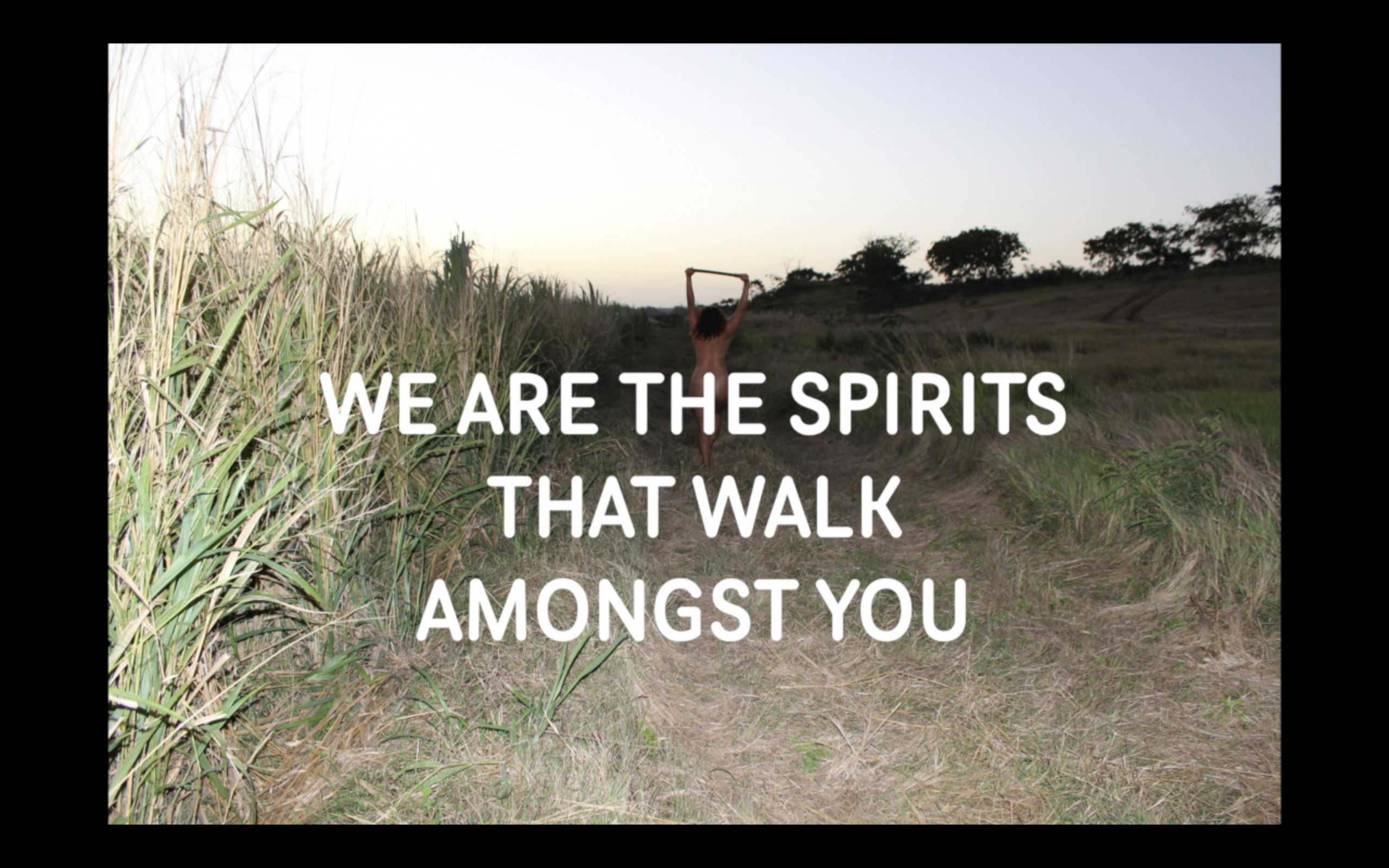
This moving-image work was filmed across Barbados, South Africa and the UK. Drawing from the writings of queer theorist Eve Kosofsky Sedgwick, it is laden with a soothing sense of the poetic and its jarring counterpoint: anxiety. This stems from ideas around contagion, the body, moral panic, xenophobia, colonialism, collective grief (or anticipation of grief) and the precariousness of hope in a hostile world.
“One of the most charming aspects of Whittle’s video pieces is the unashamedly DIY aesthetic”
“A lot of my work comes from either rage or hope, or both simultaneously,” Whittle tells me, not long after a summer that saw widespread Black Lives Matter protests in the wake of George Floyd’s killing. “There was so much going on which enraged me, and that meant that I had so much energy that I wanted to put into my work… I’ve been looking at making people witnesses of the layers of history that led us to this point, especially around the hospital environment; how certain bodies are not held with great respect, or they’re kind of rendered powerless.”
There was a compulsion at play when it came to Whittle’s productivity during this period: over lockdown, many of her projects were cancelled, and she says she did not intend to make any work. “But I also felt like I had to do something with the energy and my own anger with the different unravelling situations,” she says.
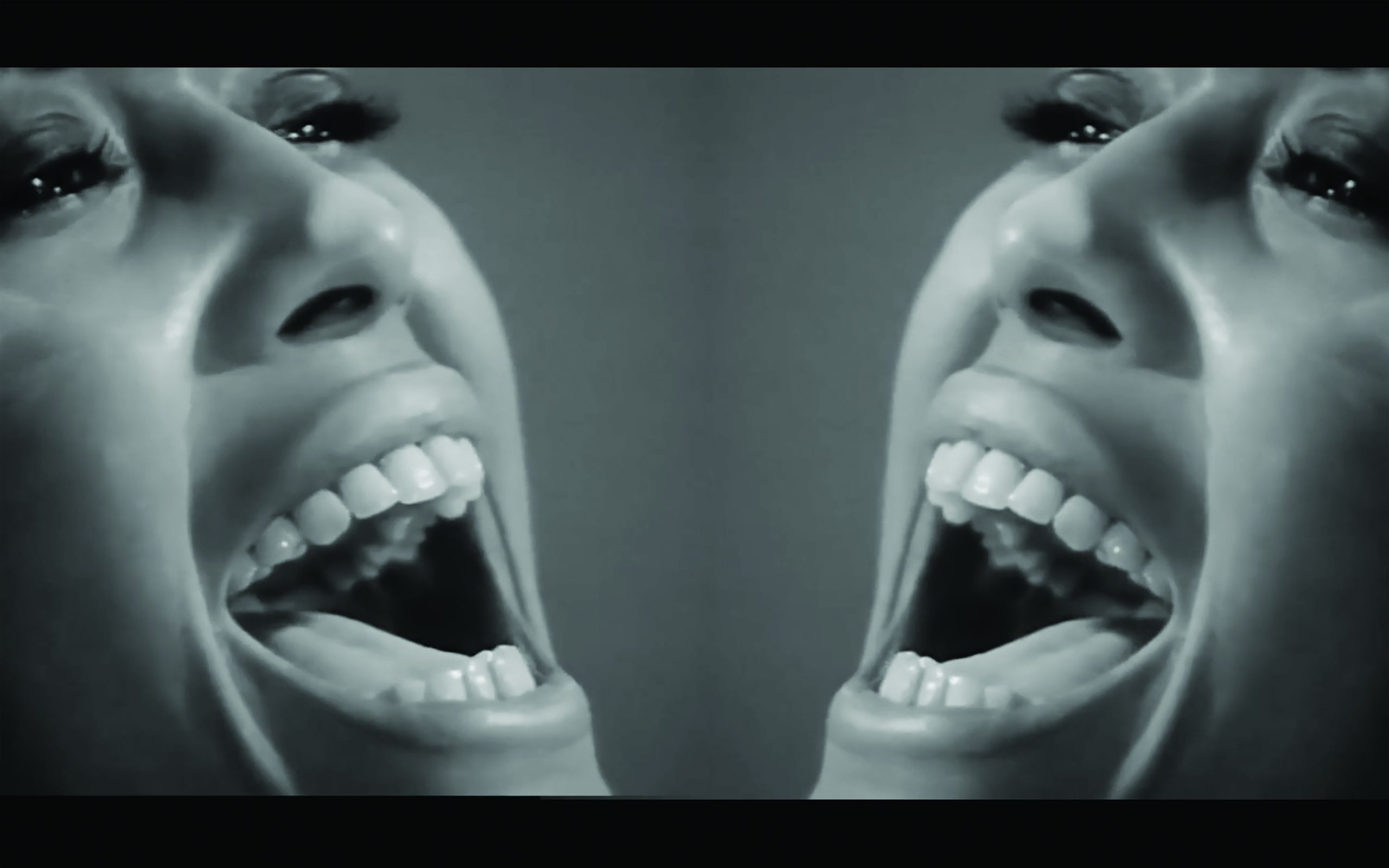
Many issues that the pandemic exacerbated and exposed feel particularly pertinent to her art. It brought the body into sharp focus, a fundamental aspect of her practice for many reasons. Her subtly delineated yet searingly intentional portrayal of the dichotomy between the female body as a force of nature and a fragile fundament of fear, subjection, tyranny and sickness, often sees her become the protagonist of her video works.
Throughout her life, Whittle has suffered with fibromyalgia and chronic fatigue, which was one of the reasons her family moved from Barbados to Birmingham, UK, when she was a teenager in order to get a diagnosis (she is now based in Glasgow). Having a “body that’s often unwell” but in which “you look completely healthy” means that people have certain expectations when it comes to “labour”, she says. It is one of the key reasons that her work is so focused on ideas of self-care.

“I made a decision that I was going to be very clear with my boundaries and look after my healing, and look after my house,” she says. “But I also recognise that’s a privilege. Not everyone can do that.”
“I made a decision that I was going to be very clear with my boundaries and look after my healing”
Illness is an ever-present spectre in her life and work, one that went from ghostly to starkly real with the threat of Covid-19. The body also acts as a vehicle for her discussions of the ongoing oppression of people of colour: bodily agency is, you could say, the ultimate symbol of freedom, its shackling the most simplistic signifier of slavery.
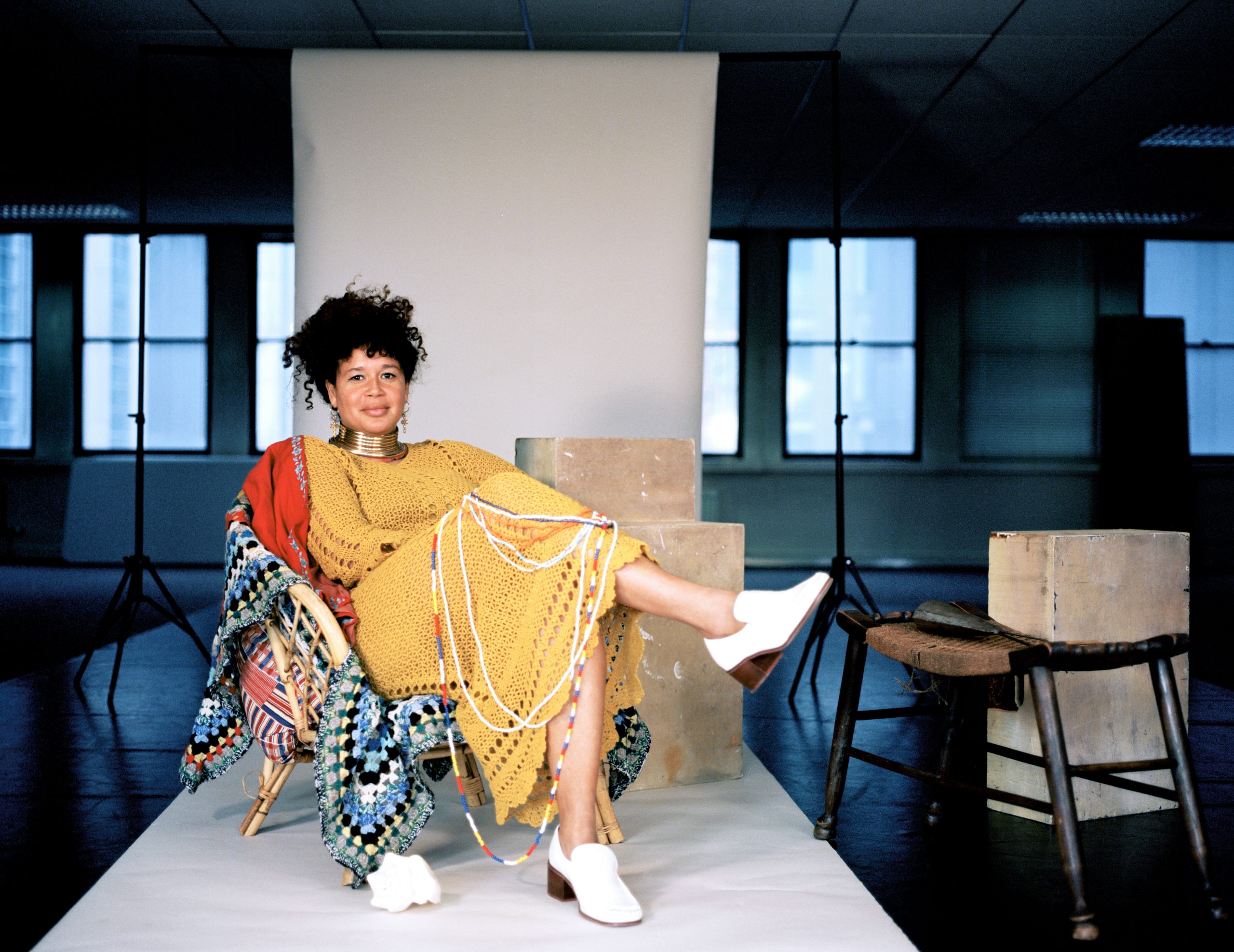
Just as terrifying as the perilousness of the physical body is what Whittle terms “emotional passivity”: the way many people are able to know exactly what is going on regarding injustices such as police brutality, but experience no emotional connection to it. Her art becomes an antidote to this, both on a personal level of expression and as a way of educating others.
It is also a conduit to hope. “The way for me not to feel completely consumed by things is to think about hope as a resource that keeps me going,” she says. “It means I’m doing better than just enduring in the face of all of this horror.”
Her creative practice continues to be a vital tool in the mode of self-compassion or “radical love” that underpins her work. “Deciding that I’m going to love my body, even when it can’t always labour, is anti-capitalist. It’s anti-white supremacy, it is absolutely a positive and profound act of resistance.”
Emily Gosling is Elephant’s former contributing editor. Her book, Great Minds Don’t Think Alike, is published by Ilex Press
Alberta Whittle is representing Scotland at the 59th Venice Biennale
